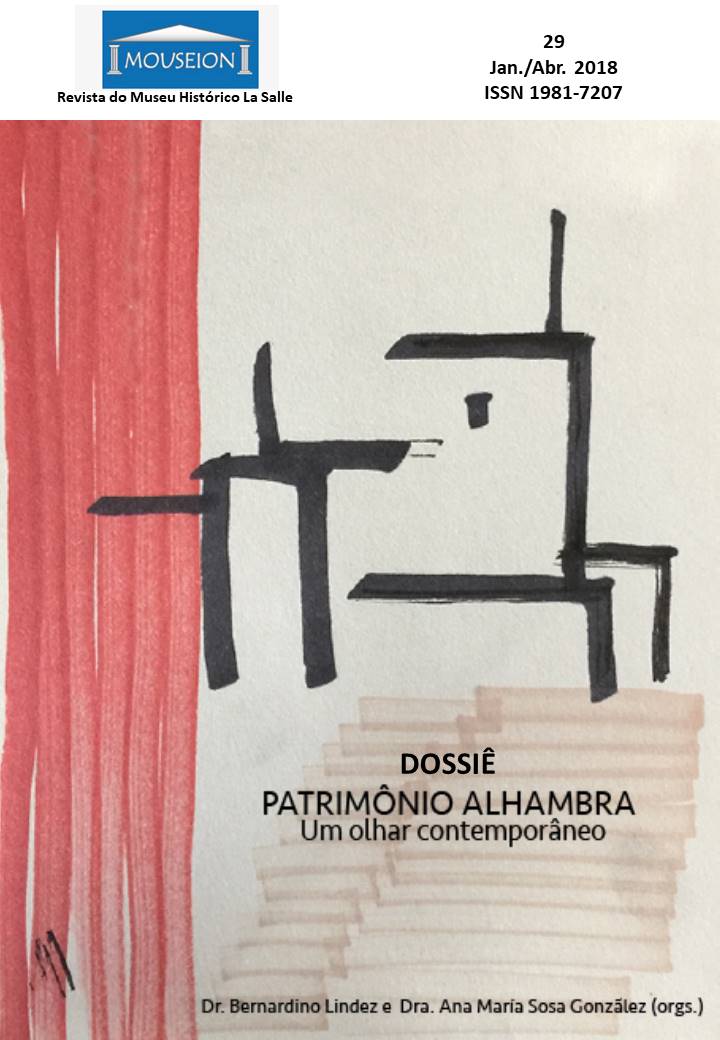Landscape gazing from the Alhambra architecture: a heritage asset
DOI:
https://doi.org/10.18316/mouseion.v0i29.4669Keywords:
Architecture, Contemplation, Landscape, Granada, AlhambraAbstract
In the palatine city of the Alhambra, there are various Nasrid spaces clearly conceived to gaze at landscape. This appears both surprising and unusual in a medieval context, in which the military interests and the productive use of land took precedence over any other consideration towards it. The desire to look outside for recreation is expressed not only in the position, spatial configuration and openings of this architecture but also, in certain cases, in the historical evidence or in the epigraphical messages immortalized on its walls. It seems of great interest, first of all, to recognize this recreational and apparently disinterested gazing in a Middle Age in which, theoretically, the notion of landscape had not been invented yet in the European continent. At the same time, this ancient architecture designed to house contemplative activities appears to have no clear precedents regarding its intense visual connection with the surrounding landscape. Its heritage condition appears undeniable, among other reasons, because of the mutual dependence of this architecture and the local landscape it aims to frame and contemplate. Moreover, the spatial experience achieved has set precedents in the architectural design of viewpoints, which have survived to these days. The study of a series of spaces selected also leads to questioning the theoretical linearity and the simplifying postulates of landscape history, in order to reopen the debate considering the historical, social and cultural peculiarities of each territory.Downloads
Published
2018-07-02
Issue
Section
Dossiê
License
Authors must submit their manuscripts to be published in this journal agree with the following terms:
Authors maintain the copy rights and concede to the journal the right of first publication, with the paper simultaneously licensed under the License Creative Commons attribution that permits the sharing of the paper with recognition of authorship and initial publication in this journal.
Since the articles are presented in this journal of public access, they are of free use, with their own attributions for educational and non-commercial purposes.


